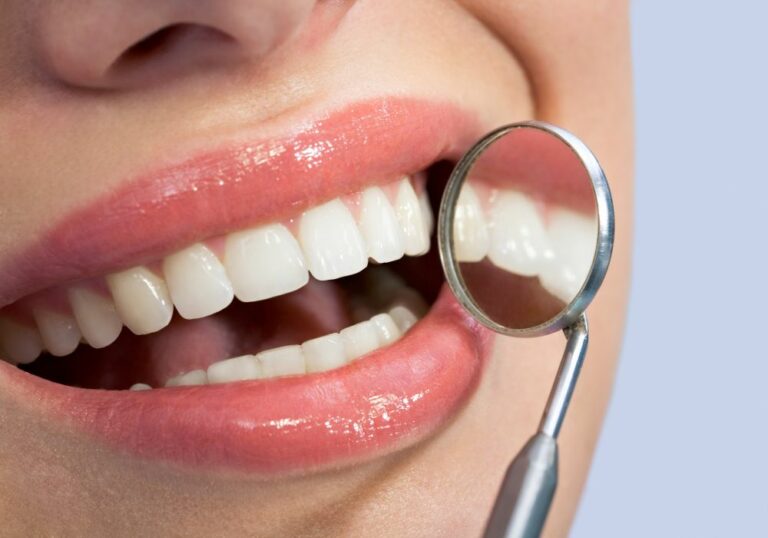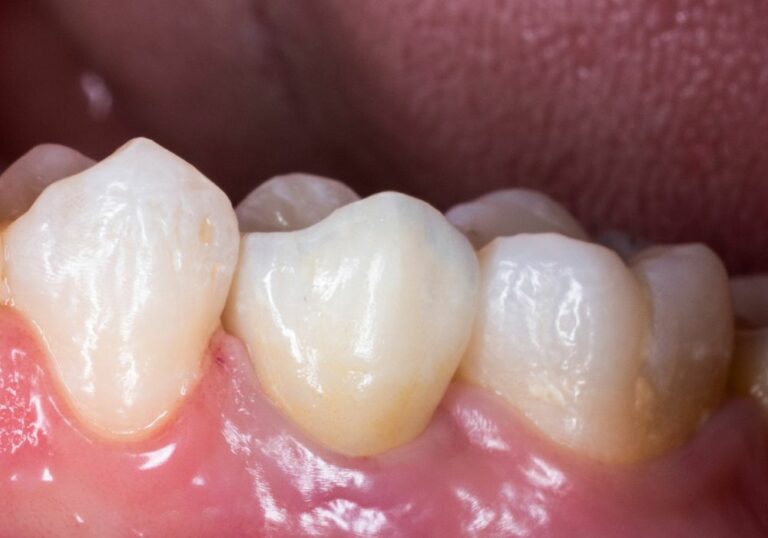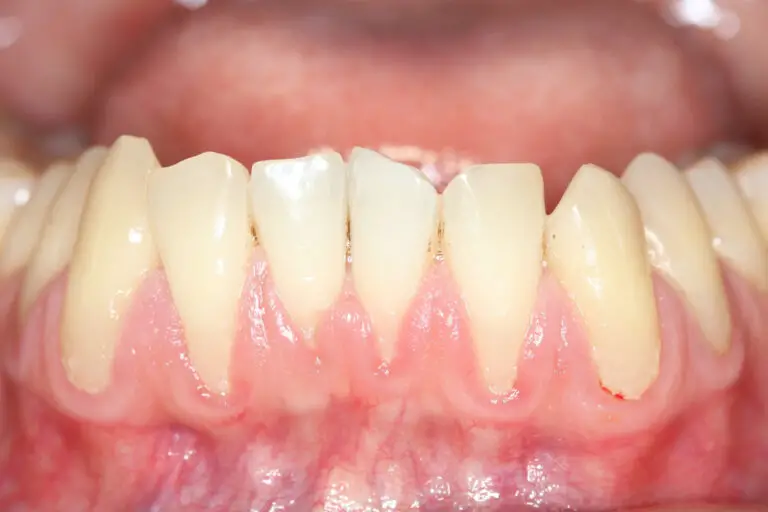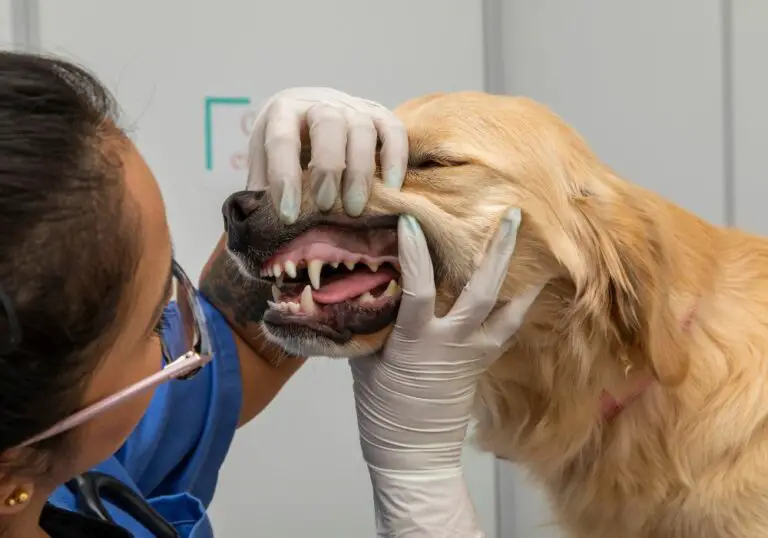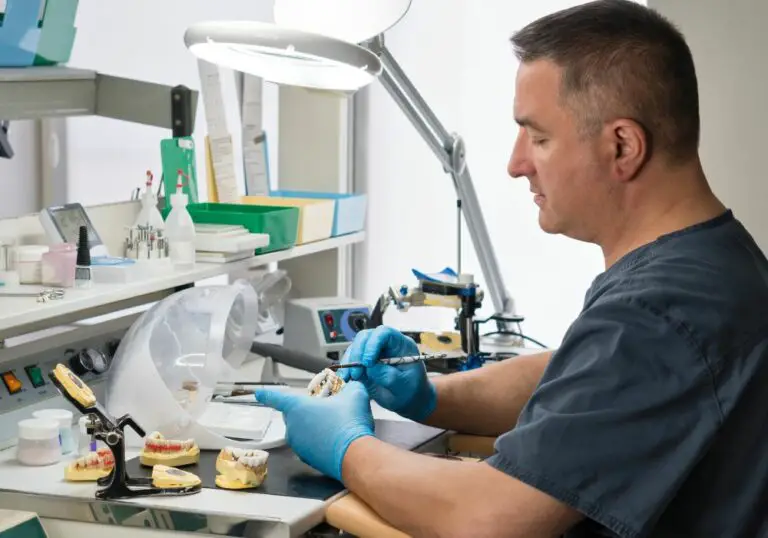What Exactly is a Gum Abscess?

A gum abscess, also referred to as a periodontal abscess, is a localized collection of pus that forms in the tissues surrounding a tooth. It signifies an infection taking hold between the tooth and gum.
Gum abscesses develop when bacteria gain entry to the tooth’s inner layers or periodontal pockets around the roots. The body responds with inflammation and pools infected fluid in a small area. A clear to yellowish pus forms, putting pressure on the gum tissues and essentially forming a swollen blister.
Abscesses most frequently arise from advanced gum disease. However, they can also result from:
- Severe tooth decay and cavities that reach the pulp
- Cracks or chips in the tooth enamel that allow bacteria inside
- Trauma from aggressive teeth grinding
- Foreign objects lodged under the gumline that cause irritation
- Previous dental procedures
Gum abscesses cause throbbing pain, swelling, redness, and tenderness in the affected area. You may also experience sensitivity to hot or cold, bad breath, and an unpleasant taste. Fever, swollen lymph nodes, and feeling generally unwell can occur as the infection spreads.
Left untreated, the bacteria can damage tissue around the tooth root and jawbone. Ultimately this can lead to tooth loss and other dental complications. It’s crucial to see a dentist promptly.
Why Shouldn’t I Drain It Myself?

You may wonder – if it’s just a pooled pocket of pus, why not simply stick a sterilized needle into the swollen gum and drain out the infection yourself?
This is strongly discouraged for several reasons:
You’ll Spread the Infection
Sticking a needle blindly into the gum tissue risks pushing bacteria deeper inside the gums and introducing new microbes. This can quickly worsen the infection instead of improving it.
Any pus that remains in the pocket also continues fueling the infection. So a simple drainage does nothing to actually cure the underlying problem.
It’s Difficult to Drain Completely
The abscess can be challenging to fully drain on your own without the right tools and visibility. Dentists use localized anesthesia so they can open up the area and thoroughly flush out the pocket of infection without pain.
Any pus left behind after an attempted home drainage will continue to cause swelling, pain, and other symptoms.
You Could Damage the Tooth and Gums
Sharply inserting a needle runs the risk of injuring the tooth roots or gum tissues. This can lead to additional dental issues and infection.
Serious Complications Can Develop
If the infection spreads, it can develop into a severe dental abscess or cystic lesion that runs deeper below the gums. This may ultimately require extraction of the tooth.
You also risk the infection progressing to facial cellulitis, a bacterial skin infection causing major swelling of the face and neck.
It Masks the Real Problem
Repeatedly draining pus from the abscess temporarily relieves pain. But it prevents proper treatment of the underlying gum disease causing the infection.
This gives a false sense the problem is solved while allowing the condition to worsen over time. It leads to delay of definitive dental treatment.
When to Seek Emergency Dental Care
Most gum abscesses can wait a day or two to see a dentist. However, if you develop any of the following, seek emergency dental care promptly:
- Facial or neck swelling
- Difficulty breathing or swallowing
- Severe throbbing pain uncontrolled by over-the-counter medication
- Fever over 100°F
These can signal the infection is progressing quickly and may require hospital care.
What Treatment Options are Available?

Instead of attempting a homemade needle drainage, your dentist has safe professional techniques to treat a gum abscess:
Root Canal Treatment
If the abscess is localized around the root tips, your dentist may perform a root canal to remove the infected pulp tissue. The space is disinfected and sealed off to prevent further infection. A temporary filling or crown completes the repair.
Gum Surgery
If the abscess lies in the gum tissues, you may need a gum flap procedure. Your dentist lifts back the gums to open up the area and debride damaged tissue and bacteria. This removes the deep infection and allows the gums to reattach tightly around the tooth again.
Medications
Antibacterial mouthwash and antibiotics are often prescribed to control the infection. Anti-inflammatory medication reduces swelling and discomfort.
Tooth Extraction
In severe untreatable cases, the affected tooth may be extracted. This fully removes the source of infection.
Dental Drainage
The dentist may create a small drainage hole or incision in the swollen gum to release the trapped pus and relieve pressure before further treatment. Local anesthetic is administered first for pain control.
Can I Do Anything for Symptom Relief at Home?
While waiting for your dental visit, you can use self-care measures to temporarily minimize pain and inflammation from the abscess:
- Salt water rinses – Gently swish warm salt water around the affected area to help draw out infection and soothe pain.
- Cold compresses – Apply an ice pack or cold cloth to the outside of your cheek near the sore gum. This helps minimize swelling.
- Pain relievers – Over-the-counter anti-inflammatory medication like ibuprofen can offer some pain relief.
- Herbal remedies – Antimicrobial and anti-inflammatory herbs like myrrh, clove, and oregano oil may curb bacterial growth when applied topically on the gum.
- Dietary adjustments – Stick to soft, lukewarm foods and avoid spicy foods that may irritate the sore area.
Keep in mind these home remedies only temporarily reduce symptoms but do not treat the root problem. The gum abscess needs proper dental treatment. Never attempt to drain or puncture the abscess yourself, as this can worsen the infection and damage surrounding tissues. See your dentist promptly.
Prevention Tips

Practicing good oral hygiene and getting regular professional care can help prevent painful gum abscesses from forming:
- Brush teeth twice daily and floss once per day to remove plaque-causing bacteria.
- See your dentist every 6 months for cleanings and checkups to catch issues early.
- Have any gum disease treated promptly before it can worsen.
- Avoid smoking and tobacco products that increase infection risks.
- Control underlying conditions like diabetes that make infections more likely.
- Eat a balanced diet with vitamin C for gum health and take prescribed supplements if needed.
- See your dentist about any mouth pain, swollen gums, or bad breath so it can be diagnosed and treated early.
By taking care of your teeth and gums properly, you can lower chances of developing a gum abscess. But if one does occur, avoid attempting DIY home draining procedures. Instead visit your dentist right away for professional treatment to resolve the infection.
Conclusion
In summary, a gum abscess is a localized pocket of pus indicating an infection between the gum and tooth. Although you may be tempted to try draining it yourself with a sterilized needle, this is not recommended. Doing so risks spreading the infection deeper or causing damage. Instead, see your dentist promptly for proper treatment like root planing, antibiotics, or tooth extraction if needed. Use saltwater rinses, cold compresses, and over-the-counter pain relievers temporarily until your dental appointment. Practicing good daily dental hygiene and getting regular professional cleanings and checkups can help prevent painful gum abscesses from developing in the first place.


